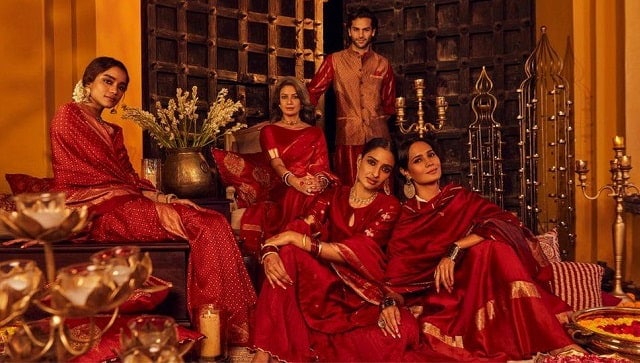 We are living in an age of ‘attention economy’.Since the time humans invented language, they have done everything for attention.Earlier, attention was localised.If you were the most fashionable person, the attention you got was limited to your locality or maximum in your college or office.If you were a reasonably okay singer, painter, poet or newsworthy person, you could get attention only by consistently producing quality work or statements and that too over a very long span of time.
We are living in an age of ‘attention economy’.Since the time humans invented language, they have done everything for attention.Earlier, attention was localised.If you were the most fashionable person, the attention you got was limited to your locality or maximum in your college or office.If you were a reasonably okay singer, painter, poet or newsworthy person, you could get attention only by consistently producing quality work or statements and that too over a very long span of time.
Today global attention is just a tweet away.
You can be an international celebrity in a moment.Not through your talent but through outrage against you.
Sometime back I came across a trending story that ‘broke the Internet’.The story was about a man who got drunk, cut off his friend’s penis and then fed it to a dog.Then, Kim Kardashian “broke the Internet.” By “broke the Internet,” I mean she photoshopped a picture of her bare ass and put it on a magazine cover.
Because these stories were about a penis and a bare ass of Kim Kardashian, all the ‘asses’ of the world saw them millions of times with saliva dropping from their mouths, and moments later they outraged against it on their timelines to appear ethical and morally correct, which created more outrage and billions of more views were generated which outraged millions of more people.With such hyper-outrage, the media also jumped the bandwagon and wrote incitingly outrageous articles on morality.Wherever there is media attention, activists, moral police, politicians also jump in the fray.
They criticised the media while sitting in their studios, for publicising Kardashian.
Kardashian fans and critics threatened each other and their mothers with sexual violence.Memers then created millions of memes on Kardashian which made her more iconic and famous.
Everybody agreed that such nonsensical photos must not be published on covers but nobody could apply self-control to look away.
After the brutal and complete destruction of Kardashian, they moved on to the next outrage.
Kardashian became more famous and richer than ever.
She became queen of the attention economy.Today, Kardashian has come to represent everything we loathe yet can’t resist about the social media age — outrage.Outrage is the currency of the attention economy.
I remembered this incident because of the latest bouquet of outrages, starting with Fabindia’s Diwali advertisement and ending at Sabyasachi.The Fabindia ad featured a few women in deep blood red costumes with sad expressions.This depressive ad called this collection ‘Jashn-e-Riwaz’.
Everything is contrary to the festival of lights.In a hypersensitive India, Urdu for Hindu festivals or Sanskrit for Muslim festivals is blasphemy.All advertisers know it better than anyone.
Yet, Fabindia took this liberty.
Consciously.And deliberately.This shows that their intention wasn’t to celebrate Diwali but to provoke Hindus in order to create massive outrage.And the morose ad generated the desired outrage.And more.
Fabindia, a pseudo, niche boutique chain, patronised by pseudo urban culturists, suddenly became the most repeated brand name within 24 hours.
No amount of money can buy such impactful brand awareness and recall in such a quick time.Soon after the objective was met, Fabindia withdrew the ad.
By this time, Fabindia had become a household name and as I learnt their sales have zoomed up substantially and I won’t be surprised if they soon attract big investment.End result: Fabindia: 1/outragers: 0
Fabindia is an example of ‘no brand’ advertising.Where you don’t have to run massive campaigns yet you become a household name just by word of mouth or conversations around your brand.
There is no good or bad publicity anymore.There is just publicity.Thanks to the outrage industry.
The outrage industry is like a monster that needs to be fed all the time.So, it soon moved to the next outrage against Urdu.Urdu was abused and defended with more intensity.
Hindi was promoted as if that’s the only Indian language.Some people went to the extent of making Sanskrit an official and compulsory national language.Outragers didn’t care that Dost, dil, aurat, azadi, kanoon, sahib, kamra, darwaza, sharm, kismet, zehar, waqt, hawa, kitaab, yaar, sirf … are all Urdu words.The list is never ending.Urdu is an Indian language evolved like a khichdi of languages.
It’s impossible to separate Hindi and Urdu.Nobody cared that ‘Hindi’ itself is a Persian word and Urdu’s original name is Hindavi, evolved from Khadi boli of Hindi belt.
Nobody cares that this hate against Urdu is hypocritical.Because those hating Urdu also can’t stop using Urdu.
We are the only society that invented a modern language for the minority and we should be proud of it.I know I’ll get a lot of hate for saying this but hate can’t destroy the truth.That’s why I always say fight advertisers, not languages.But the Urdu shayari websites and SM handles took great advantage of this outrage and a famous Urdu Shayari website saw unprecedented growth in their followers.
The outrage generates curiosity and within moments common people forget what the outrage is all about and instead they chase the keyword to learn more about it.Like that cover photo of Kardashian generated higher viewership for her reality show and an exponential increase in her Instagram.This time, the keyword was Urdu.
So, Urdu websites and products won.
But the outrage didn’t stop there and soon it became an outrage about models not wearing Bindis.#NoBindinoBusiness was the new hashtag.
It’s another level of hypocrisy that most of the women outraging in support of Bindi weren’t wearing Bindi in their own profile photos.But the outrage industry doesn’t care about such hypocrisy or double standards.Outrage is their food.And who doesn’t like unhealthy junk food?
Nobody dared to ask a natural question: Who is a Hindu woman? Is she defined by Bindi? The same outragers get angry and protest when someone comments on their clothes and they argue that it’s their choice what they wear.When a politician had commented on ripped jeans most of these outragers had posted their photos in ripped jeans as a protest.Ripped jeans brands had benefited then.
Why should models wear a Bindi if their target market is all diverse groups of India and not just Bindi-wearing traditional Hindu married women? It’s an unwritten rule in advertising that unless the brand is very traditional and sells specifically to traditional Hindu women, it should be motif-neutral, meaning not reflecting any cultural bias.The outrage market, in order to expose and humiliate no-Bindi advertisers, tagged those brands with their ads.The brands got unbelievably high visibility for their brands which money couldn’t have bought.
In the end, all those brands with or without Bindi won the game without any effort.This was their Diwali lottery.
Of course, social media companies got increased engagement from all sides.
The Fabindia-turned-Urdu-turned-Bindi-outrage had not died down when in the most peaceful and shooting-friendly city of India, Bhopal, veteran filmmaker and eight-times National Award-winner Prakash Jha’s shooting was not just stopped by some attention-seeking goons but the set was also damaged, Jha was manhandled and ink was thrown on his face.Jha appeared in the media with a blue face.Luckily he did not suffer any grievous injuries.Surprisingly, within hours, the shooting resumed.
But the outrage continued.Jha is safe, he didn’t file an FIR with the police, nor criticised his attackers.
Prakash Jha told the media, “All is well now.And luckily the shooting has resumed.”
All is well but the outrage campaign continued.Uma Bharti, a mostly forgotten warrior, jumped the fray and announced that “no film will be allowed unless its script is approved” by Uma Bharti.
Ridiculous and hilarious statement, but effective.Everyone got to know that the third season of Ashram is being made and must be seen as presumably, it has some controversial stuff (everyone loves to watch controversial gossip).
Uma Bharti revived her fan base.Bajrang Dal reinforced its branding as the protector of Hinduism.In the outrage, nobody cared that during earlier shootings of Ashram , Karni Sena had threatened them.Karni Sena is a protestors-on-rent kind of organisation which had earlier created ruckus on Sanjay Leela Bhansali’s Padmavat and later threatened Deepika Padukone.
Padmavat got free publicity and was a prime-time debate for months on national TV.No FIR or complaint was lodged by the victims.Padmavat did a roaring business.
The ink-throwing ritual in India is generally sponsored by vested interests and in many cases by the victim himself.A photo in ink gives instant virality.
This ritual was made famous by Arvind Kejriwal when an insignificant person would throw ink and slap him.Once the media is fully milked, victims don’t ever mention it.When asked about these repeated attacks on Jha’s Ashram , Jha had replied, “Who am I to make a judgement on their demand? We had 400 million-plus views for the first season.I think viewers are the best placed to decide on ‘negative goodwill’.Shall we leave it to them?” Negative goodwill? Yes, that’s what advertisers want and these outragers, like puppets, give it to them effortlessly.
The question must be asked: Why would any decent brand want ‘negative goodwill’? Because primetime on the media debates only negative news.Once you are in this negative market, the media discusses it for hours and the brand gets million-dollar worth free publicity.The social media algorithms don’t even recognise any positive news.
They feed only on negativity, abuse and fear.So, they push a brand and keywords if they can outrage naïve puppets (users) of the outrage market.Everyone wins.Only losers are the outragers who slowly become pawns in this dirty game, and end up becoming depressed and disturbed.
As I write this article, a new outrage has begun.It’s against world-renowned and extremely decent and responsible fashion designer, Sabyasachi.
Outrage is for his ad where a model, in a black bra with mangalsutra hanging between her deep cleavage, is holding a man.It is a deliberately provocative ad.And it’s generating desired results.Those who never knew Sabyasachi are writing outrageous posts on it and people who had never heard about this brand are now visiting Sabyasachi’s website to see that ad.
Once again, the cleavage, the mangalsutra and Sabyasachi are winning the game while outragers are losing their minds and blood pressure over something they can never control.
Amid all this outrage, there was a news report everyone missed.Reliance is on a shopping spree of fashion brands where it bought a 40 per cent stake in a fashion house run by another popular Indian designer, Manish Malhotra.And for those who don’t know, Aditya Birla Fashion and Retail bought a 51 per cent stake in the Sabyasachi brand.
Are these timings of outrage against major fashion brands just a coincidence? Are these outrages engineered by the brands themselves to get the attention of investors? Or, are they triggered by their competitors to keep them away from mega-buck investments?
If you are not outraging just now like a puppet, you must think about this possibility.For anything is possible behind the scenes of this Outrage Game.
But in the end, some brands will be the winner, and outragers will always be the losers.
The author is a national award-winning filmmaker, bestselling author and a Creative Guru.
He tweets at @vivekagnihotri.Views expressed are personal..
